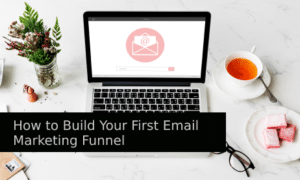Sales prospecting aims to shorten your list of prospects, identify high-quality leads, and discard unqualified leads. Qualified potential buyers can then be targeted and brought through your sales pipeline.
Therefore, sales prospecting is critical to any effective sales process strategy or SaaS marketing guide.
However, sales prospecting can be a very time-consuming task with little reward. Prospecting involves a lot of phone calls and emails that often fall on deaf ears. As a result, it can seem like a thankless part of the sales cycle.
Despite this, it remains an integral part of the sales process and needs to be well executed. So, let’s use some prospecting strategies to help make your sales team’s prospecting efforts more efficient.
1. Use A Sales Qualification Framework
Sales qualification determines whether a prospect is a good fit for your product and Ideal Customer Profile (ICP). Identifying qualified leads and discarding unqualified leads can save you a lot of time in your sales and marketing efforts.
As shown by the statistic below, most prospects will not convert, so it is essential to qualify your leads to save time and resources. You can discard unqualified leads early and focus on those that fit your product or service better.
However, it would be best if you had an efficient sales qualification framework to see these benefits.
A sales qualification framework is a criterion that helps you qualify or disqualify potential customers. There are many frameworks; however, the BANT framework is easy to follow and covers all of the basics.
Have a look at what type of questions you could ask when using this framework:
- Budget – Is the buyer in a financial position to make a purchase? Do they have a budget set aside for a purchase?
- Authority – Does your contact have the authority within their company to sign off on a purchase?
- Need – Does the prospect need your product or service? Do they have a problem that your product or service can solve?
- Timeline – When does the prospect plan to make a purchase?
You may need to alter this framework or add more questions to suit your business.
2. Identify and Prioritize High-Value Prospects
As mentioned above, it is essential to prioritize high-value prospects. This allows you to focus on prospects likely to convert and start bringing them closer to a conversion.
This saves you a lot of time in the long run. As you can see from the statistics below, much time can be wasted without prioritization.
Businesses often have vast lists of prospective buyers, so sales professionals can often get bogged down. However, when you start to qualify prospects and eliminate low-value prospects, the list becomes much shorter and more manageable.
Without prioritizing qualified prospects, you could potentially waste valuable time and resources on leads that were never a good fit for your business. Prioritizing valuable prospects makes for a much more efficient sales prospecting process.
It should result in increased conversion rates; high-quality leads are much more likely to convert. Prioritizing also reduces the workload and time required for sales prospecting.
However, it is important to remember that you don’t need to disregard any prospects that aren’t of extremely high value. It may be worth keeping in contact with prospects who aren’t qualified enough to be the main priority.
3. Track Your Prospects on Social Channels
Tracking your prospects’ activity on social media channels is another good technique for sales prospecting. Consumers spend a lot of time on social media, so monitoring their activity can give you great insight.
You can use lead-tracking software or sales prospecting tools like Pipedrive or Bloobirds to discover these insights. Another option is to use a social media management tool like Hootsuite. Then, utilize the monitoring features to find relevant users that fit your ideal customer profile and track their activities.
Where possible, try to get involved in relevant conversations on social media with key stakeholders; these are the people that make purchasing decisions. This is a good way of introducing yourself to decision-makers in business. Then, you can follow consumers from these conversations and start to engage with prospects directly.
This process can be broken down into three stages, as shown below.
When reaching out to individual prospects, use the social media data you have gathered to guide the conversation. Make it specific to their company’s needs, and tell them how your products or services can solve their problem.
4. Fix the Time to Call a Prospect
Fixing a time for a call or sales meeting with a potential prospect has significant benefits for both parties. Let’s look at this from the prospect’s perspective.
A random unscheduled phone call can feel very intrusive, especially if someone is trying to sell you something. The image below shows that just 3% of cold calls lead to face-to-face sales meetings or appointments with a prospect.
Not only will prospects not be receptive to an unscheduled sales proposal, but they will also be less likely to engage with you in the future.
So, engage with prospects and give them your information through your digital business card beforehand to put them at ease and build rapport. Your customers will be much more receptive if they don’t feel bombarded by a random sales call. This makes for a much more pleasant and productive process for both parties.
Aside from potentially increasing conversion rates, scheduling calls also saves you time. Many sales calls are not answered, especially if they are unscheduled. If you communicate with leads through text or email and set a time for a call, they are much more likely to pick up. Avoiding wasting time on unscheduled calls makes your sales prospecting process much more efficient. Also, fix the text message delayed process, which can have a bad effect on your communication with customers.
5. Establish Contact: Email Vs. Phone Communication
Regarding establishing contact in sales prospecting, there are two main options; email communication and phone communication.
To help you choose, let’s go through the advantages of email communication:
- Email communication allows prospects to do research and consider offers on their own time
- It is easier to get in contact with key stakeholders and decision-makers through email
On the other hand:
- It can be hard to grab prospects’ attention through sales emails
- Emails can be easily ignored or forgotten about, takes longer to get a response
Now let’s look at the advantages of phone communication:
- Easier to grab prospects’ attention through phone communication, which leads to faster responses
- Having a verbal conversation over the phone helps to establish a rapport
Finally, these are the disadvantages of phone communication:
- Phone calls can feel invasive for prospects, making them less receptive
- Although phone calls grab prospects’ attention more efficiently, they can also be ignored
There is no right or wrong option to choose here. It depends on your industry, company size, and what type of communication your target audience prefers. This choice may also come down to individual sales reps; some like phone communication, while others excel in email communication. It is good practice for each sales representative to play to their strengths.
6. Follow Up to Recover Lost Leads
Another proper sales prospecting technique is to follow up on lost leads. Following up with a prospect that rejected your sales proposal may seem like a waste of time; however, it does have its benefits.
First, there is a lot to be learned from prospects that weren’t convinced by your sales pitch. A follow-up email asking why they didn’t buy can be precious for future sales prospecting. Consumer feedback is constructive, even when it is negative. It allows you to address issues early and prevent similar mistakes in the future.
It is also possible to recover lost leads. Depending on the stage at which they pulled out, some lost leads could be persuaded to rethink their decision.
Prospects who rejected your offer quickly and seemed uninterested shouldn’t be followed up on. Instead, focus on high-value, qualified prospects that fit your buyer personas. Perhaps they almost closed and completed their buying process but got distracted or changed their mind.
It is essential not to be pushy with these follow-up emails and go straight in with another sales pitch. With the initial follow-up, the aim is to initiate contact again and look for feedback, as shown in the example below.
If they engage with you, you can investigate further to see if they are in a position to buy and bring them through the sales funnel once again. You may need to refresh their memory if it has been a while since your last interaction.
In Closing
To sum up, sales prospecting can be tedious and challenging; however, it can save businesses a lot of time by creating a pipeline of high-value potential customers if done correctly. Filtering leads and identifying qualified prospects with a qualification framework is essential.
From there, you can prioritize high-value prospects, those who fit your ideal customer profile. This saves sales reps’ time that is often wasted on unqualified leads. Establishing contact early, either through phone or email, is essential.
You should also schedule a time for sales calls with prospects. Having a schedule helps to maintain consistent communication. You can also track prospects’ activity on social media to gauge their position on the customer journey. Finally, you can use tracking tools to identify lost prospects worth retargeting.
Follow these sales prospecting tips, and you will soon see improvements in your sales teams’ efforts.
Author Bio: Nico is the founder of Crunch Marketing. The company works with enterprise SaaS clients, helping them scale lead generation globally across EMEA, APAC, and other regions.









